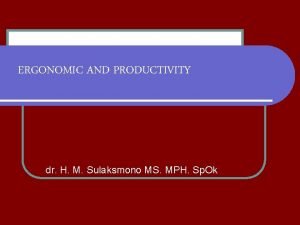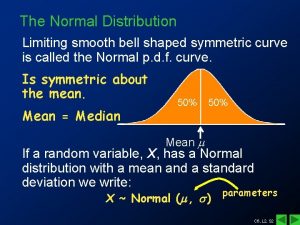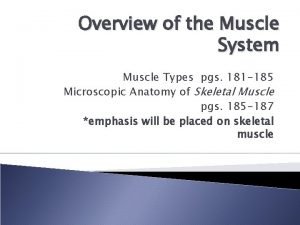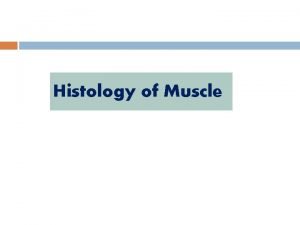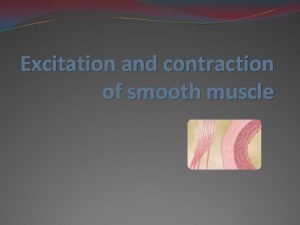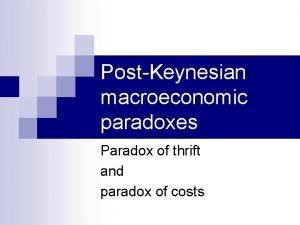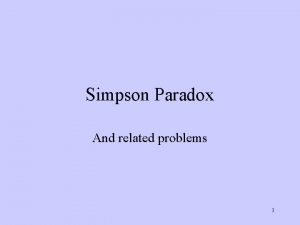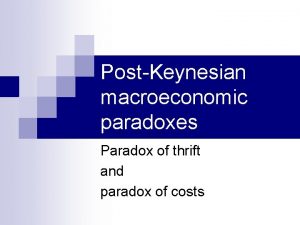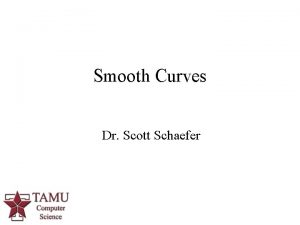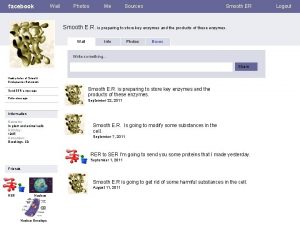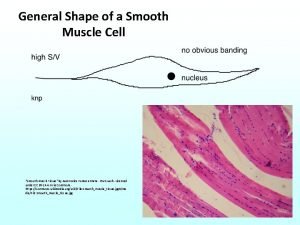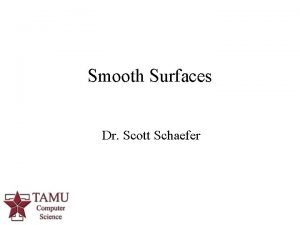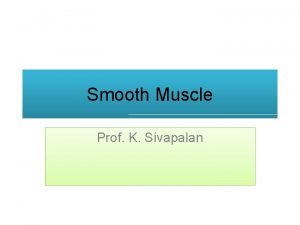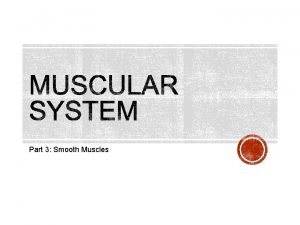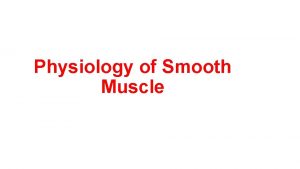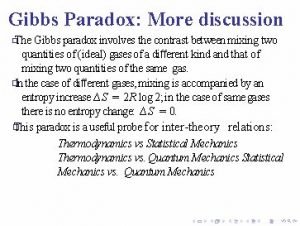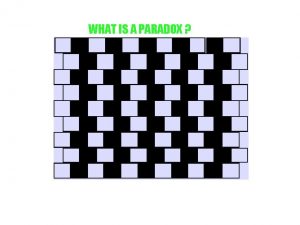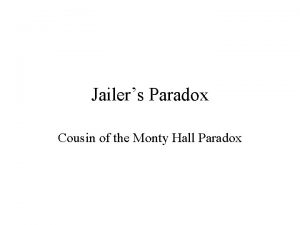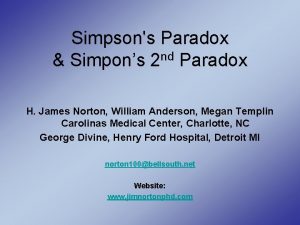IT Productivity and Productivity Paradox A Semiparametric Smooth


















- Slides: 18

IT Productivity and Productivity Paradox: A Semiparametric Smooth Coefficient Estimation Jong-Rong Chen Graduate Institute of Industrial Economics National Central University, Taiwan Ting-Kun Liu Department of Finance Chaoyang University of Technology, Taiwan and Cliff J. Huang Department of Economics Vanderbilt University, U. S. A.

Abstract • This paper explores the issue of whether information technology (IT) investment brings about the Solow productivity paradox. • This paper considers, aside from the general specification of the Cobb-Douglas production function, the impact of augmented labor productivity through IT by applying semiparametric smooth coefficient estimation.

Introduction • The progression of IT • Over the past two decades, most industrial countries have made significant investments in IT. • For example, the share of IT in a firm’s total investment in equipment jumped from 7% in 1970 to 40% in 1996 (Economist, 1996). Jorgenson (2001) found that the decline in IT prices provides enterprises powerful economic incentives for the substitution of IT investment for other forms of inputs. In the U. S. , the value of the net stock of IT capital equipment approached $900 billion by the end of 1999 (Stiroh, 2001). Table 1 • Productivity paradox • Some economists have argued that the IT revolution does not necessarily result in productivity growth. Solow (1987) called this phenomenon the “Productivity Paradox”. • Berndt and Morrison (1995) find that increases in IT are negatively correlated with multi-factor productivity. • Loveman (1994) indicate a negative marginal productivity of IT. These empirical findings further reinforce the phenomenon of the productivity paradox.

• The absence of productivity paradox • However, the empirical studies of later scholars present entirely different conclusions. • Brynjolfsson and Hitt (1996) indicate that IT spending has made a substantial and statistically significant contribution to firm productivity. • Lehr and Lichtenberg (1998) examine the impact of IT on productivity in the public sector, showing that there is a strong positive relationship across federal agencies between productivity growth and computer-intensity growth. • Other studies, Barua and Lee (1997), Dewan and Min (1997), Stiroh (1998), Gera, et al. (1999), Thatcher and Oliver (2001), and Jorgenson (2001), all showed the absence of the productivity paradox. • The empirical study of Taiwan • While the productivity of IT has been extensively studied and the productivity paradox debated, there is no empirical study of the impact of IT investment on productivity in the Taiwan manufacturing industry even though Taiwan’s PC industry has played a significant role in the production and manufacturing of IT equipment for the world since the late 1980 s.

• The non-neutral impact of IT on productivity • The rising trend of the wage rate in the high-tech industries, the so -called “skill-biased technological change” phenomenon, provides empirical evidence of the non-neutral impact of IT on labor productivity. • This is also indicated by the huge increase in the share of personnel spending across sectors and industries for the years from 2000 to 2004, according to the Directorate General of Budget, Accounting and Statistics (DGBAS) Table 1 • The paper employs a semiparametric smooth coefficient model to examine the impact of IT on the idea that the impact on the total factor productivity (TFP) may not be neutral. •

Model Specification and Estimation The generalized semiparametric function The neutral and non-neutral effects

1. Parametric specification: 1(ln(IT)) = 0 + 1 ln(IT); 2(ln(IT)) = 2 2. Partially linear model: 2(ln(IT)) = 2 3. Flexible polynomial parametric specification:

Three steps procedure For notational simplicity, denote the ith observation of the variables in logarithmic form as yi = ln(Qi), xi = ln(Labi), wi = ln(Non. ITi), and zi = ln(ITi). Equation (2) is then expressed as first step of estimation : all coefficients are smoothing function of z = second stage of estimation : subtracting from the regression and then apply LS

The final step: step subtracting from both side Test statistic Jn The null hypotheses that the parametric models such as (3) and (4) are a correct specification can be stated as: H 0: H 1:

The alternative hypothesis is that the semiparametric model is the correct specification: Data Sources The 1, 114 samples of firm-level data used in this analysis are obtained from a compulsory survey conducted by the DGBAS based on the Industry, Commerce, and Service Census of Taiwan of 1991. To the best of our knowledge, this is the only official data containing the data of the variables used in this study. Table 2

Empirical results • Table 3 IT investment provides a significant contribution to productivity. • The trend, however, diverges around the threshold value of 2. 5 million NT dollars (ln(IT) = 0. 92) in IT investment. • This divergence is further confirmed by the hypothesis test. The null hypothesis that Model (1) is a true model is rejected with the test statistic Jn = 3. 966, which is statistically significant at the 1% level.

Empirical results • The estimates based on Model (3) and Model (4) diverge beyond 6. 3 million NT dollars (ln(IT) = 1. 84) of IT investments where 1(ln(IT)) starts declining and 2(ln(IT)) increasing. • Again, this divergence is further confirmed by the hypothesis test. The null hypothesis that Model (3) is a true model is rejected with the test statistic Jn = 10. 007, which is statistically significant at the 1% level.

Empirical results • Besides, IT has a significant spillover impact on the labor productivity, particularly for larger and more IT deepening firms. • • Following Huang (2005) we also calculate the cross-effects of IT capital on labor inputs’ marginal product (MPLab) (i. e. ). We find that IT capital is the substitute for labor.

Empirical results • The average RTS are: 1. 0513 (Model (1)); 1. 0358 (Model (2)); 1. 0549 (Model (3)); 1. 0396 (Model (4)). • The observed production in the Taiwanese manufacturing firms is shown to be increasing return to scale. Model (1): RTS_M 1 = 1 + 2 + 3 Model (2): RTS_M 2 = d( 1(ln(IT))) / d(ln(IT)) + 2 + 3 Model (3): RTS_M 3 = 1 + 4 ×ln(lab) + 2 + 4 × ln(IT)+ 3 Model (4): RTS_M 4 = d( 1(ln(IT))) / d(ln(IT)) + d( 2(ln(IT))) / d(ln(IT)) ×ln(lab) + 2(ln(IT)) + 3 • This implies that when IT deepening reaches a certain threshold, we should not suggest higher IT deepening firms to invest too much resource in physical IT equipment (i. e. hardware and software), but encourage them to devote to IT related education and on-the-job training expenses of human capital accumulation to attain a higher efficiency from applying IT. • These results reflect that the higher level of physical IT is worthy to be emphasize, however the efficiency with which firms use their factor of production is a more important issue in the long run.

Table 1: IT Expenditure and Distribution (NT$ million, %) Sector and Industry Total Expenditure (NT$) Industrial Sector 2000 2001 2002 2003 2004 Manufacturing 2000 2001 2002 2003 2004 Share (%) Hardware Software Telecommunication Personnel 23, 539 25, 531 27, 244 31, 700 40, 833 40. 44 56. 75 26. 41 23. 63 23. 48 31. 88 14. 90 24. 44 20. 87 22. 48 7. 78 4. 88 9. 53 8. 28 9. 34 14. 95 16. 86 31. 69 40. 12 37. 77 20, 105 20, 624 22, 954 27, 098 33, 848 38. 86 59. 40 24. 73 22. 60 23. 28 33. 30 15. 85 25. 62 21. 60 22. 98 7. 68 5. 90 9. 54 8. 14 9. 43 14. 82 15. 38 32. 31 40. 71 37. 94 Other 1. 95 6. 62 7. 94 7. 10 6. 92 2. 34 3. 47 7. 79 3. 95

Table 2: Summary Statistics (NT$ Million) Output Labor Capital Non. IT IT Labor Productivity No. of Observations Mean 438. 21 333. 86 58. 76 57. 15 1. 61 1. 26 1, 114 St. Dev 733. 94 364. 49 130. 07 128. 94 3. 41 1. 21 Small 40. 94 84. 62 7. 93 7. 51 0. 43 0. 68 288 Medium 126. 02 178. 24 17. 37 16. 63 0. 74 0. 93 712 Large 296. 57 323. 50 43. 40 41. 98 1. 42 1. 25 81 1, 290. 50 748. 97 166. 08 162. 22 3. 86 2. 17 33 Firm Size Big

Table 3: Parametric- and Semi-Parametric Estimates Variable Model (1) Cobb- Douglas Model (2) Partial Linear Model (3) Flexible- Polynomial Model (4) Semi- Parametric Constant 1. 227 (9. 143) ln(IT) 0. 112 (5. 438) 1. 123 (1183. 966) 0. 252 (3. 244) 1. 141 (164. 306) ln(Lab) 0. 554 (19. 502) 0. 571 (61. 291) 0. 539 (18. 239) 0. 551 (472. 205) 1. 331 (9. 167) -0. 025 (-1. 867) ln(IT)*ln(Lab) ln(Non. IT) 0. 385 (21. 902) 0. 376 (24. 627) 0. 385 (21. 956) 0. 413 (74. 364) Sigma ( ) 0. 373 0. 372 0. 371 R-square (R 2) 0. 796 0. 797 Test statistics (Jn) 3. 966 10. 007

The End • Thank You
 Productivity paradox definition
Productivity paradox definition Contoh productivity paradox
Contoh productivity paradox The normal curve is smooth and symmetric
The normal curve is smooth and symmetric Other lines that are very measured geometric directional
Other lines that are very measured geometric directional Sarcoplasmic
Sarcoplasmic Cardiac skeletal and smooth muscle comparison
Cardiac skeletal and smooth muscle comparison Structure of plant and animal cell
Structure of plant and animal cell Have smooth even edges and are measurable
Have smooth even edges and are measurable Comparison of skeletal cardiac and smooth muscle
Comparison of skeletal cardiac and smooth muscle Floors should be relatively smooth and non-absorbent.
Floors should be relatively smooth and non-absorbent. Comparison of skeletal cardiac and smooth muscle
Comparison of skeletal cardiac and smooth muscle Shapes that have smooth even edges and are measurable
Shapes that have smooth even edges and are measurable Shapes that have smooth even edges and are measurable
Shapes that have smooth even edges and are measurable Characteristics of skeletal smooth and cardiac muscle
Characteristics of skeletal smooth and cardiac muscle Cardiac muscle tissue
Cardiac muscle tissue Which line creates a feeling of height and formality?
Which line creates a feeling of height and formality? A type of leadership through fear in nstp
A type of leadership through fear in nstp Whats the difference between smooth and rough er
Whats the difference between smooth and rough er Smooth muscle fusiform
Smooth muscle fusiform

